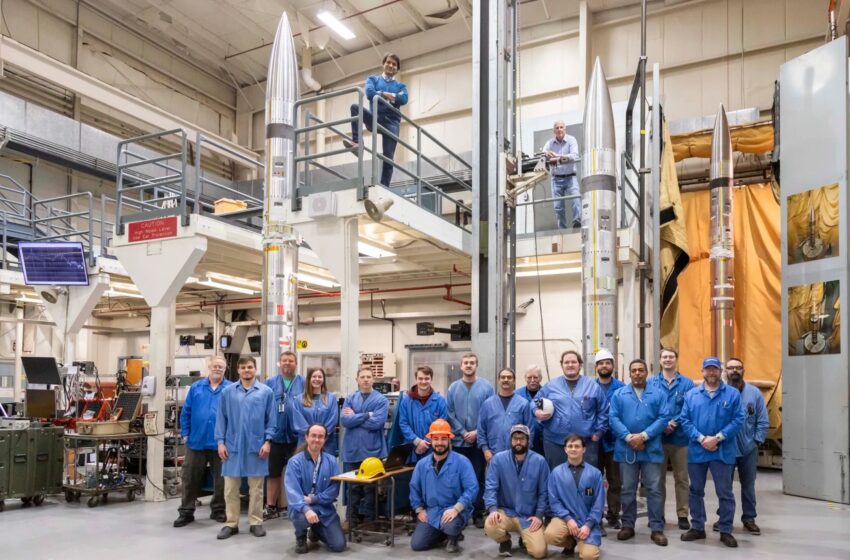Aroh Barjatya leads mission to study solar eclipse effects

APEP team lead, Aroh Barjatya, is at the top center, standing next to the guardrails on the second floor. Photo credit: NASA/Berit Bland
Indian American scientist Aroh Barjatiya headed a National Aeronautics and Space Administration (NASA) mission to study the effects of the April 8 solar eclipse on the Ionosphere, Earth’s upper atmosphere.
Barjatya, a professor of engineering physics at Embry-Riddle Aeronautical University (EMRU) in Florida, where he directs the Space and Atmospheric Instrumentation Lab, oversaw the launch of three sounding rockets from Wallops Island, Virginia during the eclipse.
“What a spectacular day!!! #eclipse2024
It’s been a long day since reporting to station at 6:30 am and wrapping up the launch party at 9:30 pm,” he posted on LinkedIn. “All three rockets were launched successfully and *every instrument worked*!!!”
READ: NASA’s Madhulika Guhathakurta: listen to your gut, follow your passion (November 26, 2018)
“My deepest gratitude to all my fellow researchers at collaborating institutions and insanely capable and stellar students at Embry-Riddle Aeronautical University, as well as, most crucially, to everyone at NASA Wallops Sounding Rocket Program Office and NASA Goddard Space Flight Center for helping accomplish *six complex rocket missions in six months* !!!”
“It has been an incredibly fast-paced APEP Eclipse Rocket Campaign, and now we have a mountain of data to sift through,” Barjatya wrote.
His research interests and active projects span small satellites, sounding rockets, high-altitude balloons, spacecraft charging, embedded electronics, space situational awareness, and space systems engineering. He is currently part of six additional missions, including a NASA mission to Mars.
READ: Anil Menon graduates as NASA astronaut (March 7, 2024)
“Understanding how an eclipse sets off a unique pattern of atmospheric waves in the ionosphere is a key goal for Barjatya and colleagues,” according to a University of Florida press release.
NASA successfully launched three Black Brant IX sounding rockets from its Wallops Flight Facility as part of the Atmospheric Perturbations around the Eclipse Path (APEP) mission.
The launch window was scheduled between 2:40 p.m. and 4:05 p.m. The first rocket was launched 45 minutes before the total solar eclipse. The second took off at 3:20 during the eclipse, and the third and final rocket launched at 4:28 p.m.
READ: Indian American astronaut Raja Chari takes first spacewalk (March 17, 2022)
NASA said the three launches are important to gather data on how the sun’s disappearance affects the ionosphere. The ionosphere is home to all the charged particles in Earth’s atmosphere and it is where Earth’s atmosphere meets space.
“It is the upper layer of our atmosphere extending about 100 kilometers to a 1000 kilometers, roughly 60 to 600 miles. There the pressure is low enough that charged particles can remain free and show collective behavior. It’s an electrified region that reflects and refracts radio signals, and also impacts satellite communications as the signals pass through,” said Barjatya.
“Understanding the ionosphere and developing models to help us predict disturbances is crucial to making sure our increasingly communication-dependent world operates smoothly.”
READ: Indian American astronaut Sirisha Bandla joins Kalpana Chawla Project (October 6, 2021)
Each of the three rockets had four sub-payloads for a total of 12 datasets that will be studied in preparation for future perturbations.
The next total solar eclipse over the contiguous US is not until 2044.

